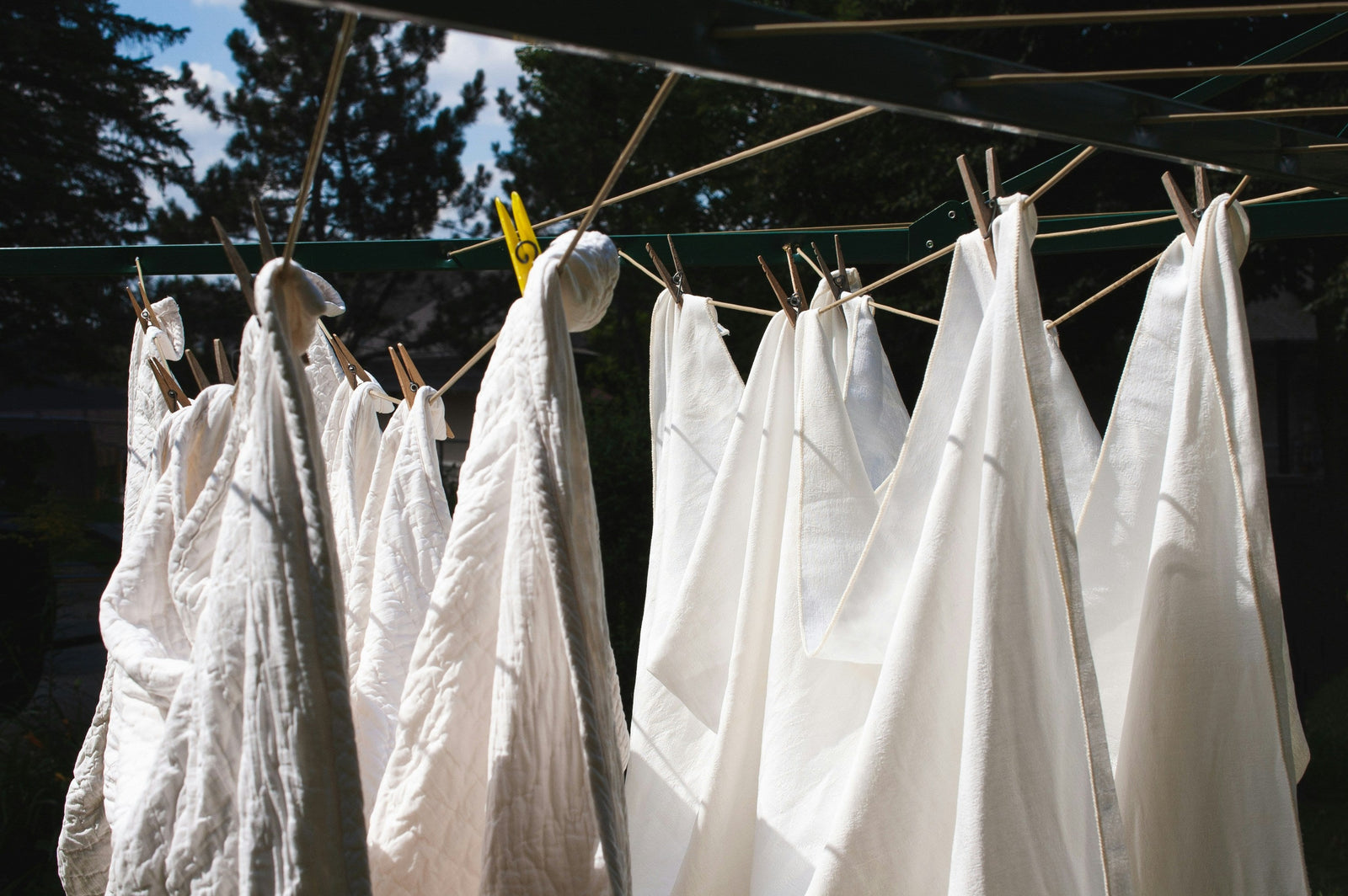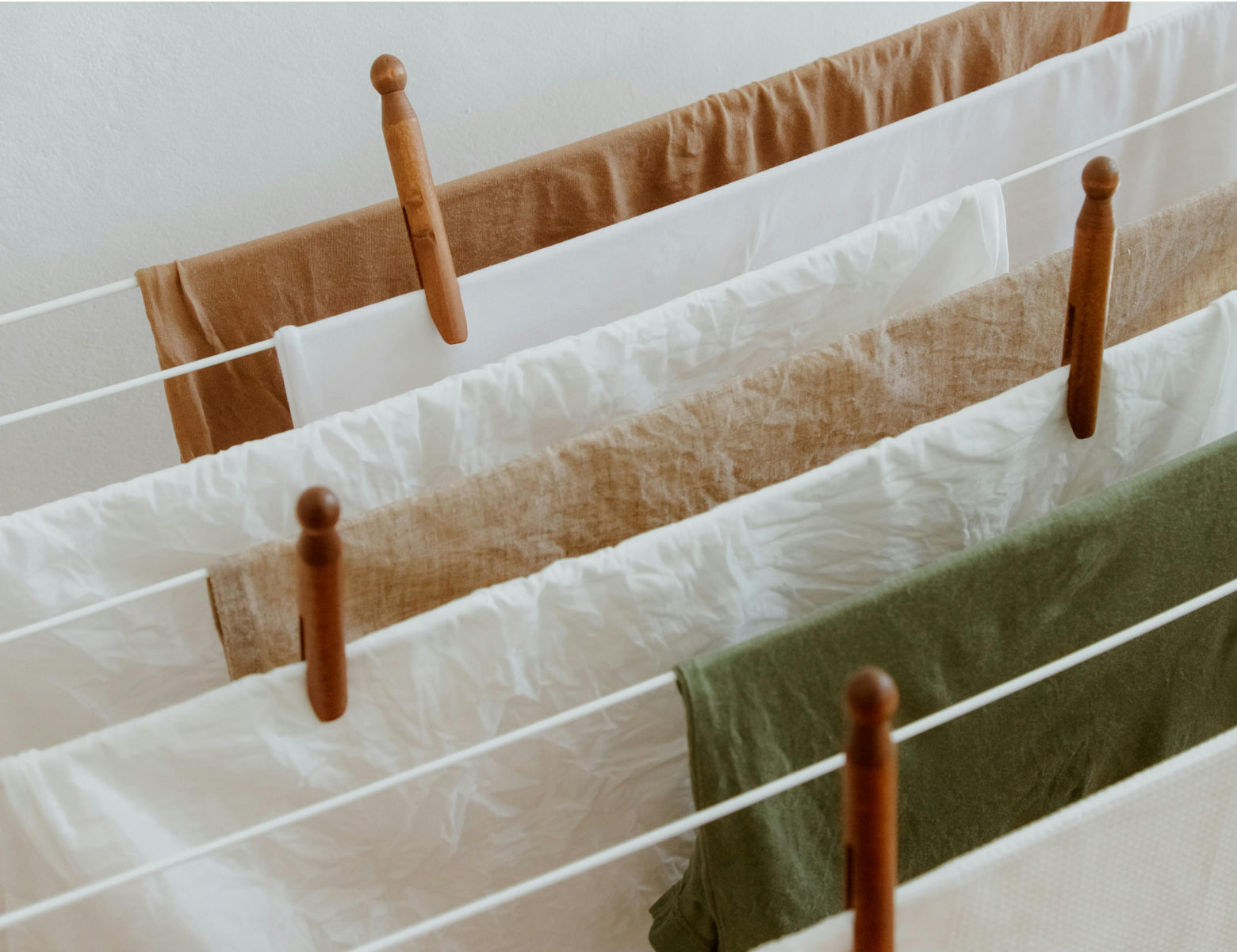What are Optical Brighteners in Laundry Detergent? How They Work & Why Avoid Them

Have you ever wondered how laundry detergent companies can claim their product creates “brighter colors and whiter whites”? What makes that happen anyway?
They’re referring to specific ingredients known as optical brighteners or chemical fluorescent whitening agents designed to absorb UV light to create the illusion of whiter, brighter clothes.
While optical brighteners in laundry may create the illusion of white clothes, they come with a hefty price in terms of potential health and environmental risks.
In this article, you’ll learn all about optical brighteners, including how they work, toxicity issues, how to find laundry detergents without optical brighteners, and safer alternatives for a healthier laundry room.
How Do Optical Brighteners Work?
Prior to the introduction of optical brighteners in the 1940s, laundry detergent manufacturers would add blue dye to their products to help mitigate the natural yellowing and dulling of clothing.
This worked fairly well to whiten clothes but did not impart a brightening effect.
The discovery of optical brighteners solved this problem, and they are now used in many conventional laundry detergents.
They’re also used in textiles, hair care, cosmetics, and paper.
As previously mentioned, optical brighteners work by absorbing UV light and emitting a visible bluish-violet light. This effect enhances the whiteness or brightness appearance of white or lightly colored fabrics.
Optical brighteners used in laundry detergents are designed to permeate fabrics and build up over time, which enhances clothing’s brightness and whiteness. They are also used in clothing manufacturing to improve the appearance of clothing and textiles, extend clothing life, and enhance color.
Common Optical Brighteners Found in Laundry Detergents
Many synthetic chemical laundry detergents contain one or more optical brighteners.
Since their discovery, hundreds of types of optical brighteners have been created, many of which have been removed from the market due to safety or toxicity issues.
The remaining types of optical brighteners are considered safer and less eco-toxic, but concerns remain about their short-term, long-term, and cumulative effects .
As usual, spotting optical brighteners on labels isn’t straightforward as they’re not labeled “optical brightener.” In addition, laundry detergent companies are not required to list all the ingredients in their products. However, now most brands allow you to view their complete ingredient lists online.
The following are the most common names for optical brighteners in laundry detergents:
- Disodium distyrylbiphenyl disulfonate (DDD)
- Fluorescent brightener
- Fluorescent brightener #71
- Fluorescent brightener 28 sodium salt
- Tinopal CBS-X
Disodium distyrylbiphenyl disulfonate is the most common and has received a “D” from the Environmental Working group due to toxicity issues, which we’ll discuss next.
Are Optical Brighteners Safe? Health and Environmental Concerns
Toxicity issues with optical brighteners, which are persistent on fabrics and in water systems, soil, etc., can negatively impact people and the environment.
Environmental Impact
The optical brighteners in use today are considered more environmentally friendly than those from the past.
However, studies suggest these are persistent environmental chemicals, meaning they biodegrade slowly, which creates more significant exposure to animals and aquatic life.
Health Risks
Optical brighteners are designed to permeate fabrics and accumulate over time, which enhances their brightening effects.
Unfortunately, this means the more you wash your clothing, sheets, towels, etc., the more optical brighteners you’re exposed to.
Plus, since optical brighteners biodegrade very slowly and may not be filtered out by water treatment plants, many people likely ingest them through tap water.
This is problematic because studies suggest a possible link between optical brighteners used in laundry detergents and reproductive toxicity, skin and eye irritation, and developmental toxicity.
How to Find Laundry Detergents Without Optical Brighteners + Safer Alternatives
Optical brighteners may do a great job brightening colors, but there are plenty of less toxic options to achieve the same results.
When looking for laundry detergents without optical brighteners, always choose the most natural and least toxic options available.
That means avoiding laundry detergents with harmful ingredients , which may include optical brighteners (along with dozens of other potentially harmful ingredients). We discuss this at length in: How To Toss Your Toxic Laundry Detergent.
Branch Basics, for example, is Made Safe certified, biodegradable, ultra-gentle, fragrance-free, optical-brightener-free Concentrate you can use to make your own safe and natural laundry soap.
Paired with our best-selling Oxygen Boost, which naturally brightens and whitens clothes using the power of natural baking soda and sodium percarbonate, it’s a human—and environmentally safe—match made in laundry heaven!
Get more tips on choosing a healthier laundry detergent in: 5 Best Laundry Detergent Alternatives Without Chemicals.
Ditch Optical Brighteners With Branch Basics
Most of us have been taught we need harsh synthetic laundry detergents to get our clothing clean, fresh, bright, white, and stain-free.
Yet, this couldn’t be further from the truth!
In reality, nature, in the form of natural soaps, surfactants, minerals, salts, and enzymes, provides everything we need to clean our clothes, remove stains, and whiten and brighten whites without polluting our bodies or the environment.
Branch Basics Laundry Detergent. is incredibly convenient and simple to use, requiring just one scoop per load with no additional products needed and thoughtfully formulated with your health in mind. It does not contain fragrance, dyes, optical brighteners, ammonia, chlorine, endocrine disruptors or 1,4-dioxane. It excels in stain removal, odor elimination, and fabric preservation, streamlining your laundry routine.
Plus, it's good for the earth! This powder is biodegradable, septic-safe and prevents toxic runoff. Because it performs excellently in cold water, it saves energy and protects your fabrics.
We also have sustainably sourced Wool Dryer Balls to round out your healthy and eco-conscious laundry experience.
For more information, check out: Branch Basics Laundry Instructions.
Eager to learn more about human-safe laundry and stain removal? Check out the following articles:
Categories

Marilee Nelson
Marilee Nelson is an Environmental Toxins expert who has spent nearly 30 years advocating for the chemically-sensitive and chronically-ill. She is a Board Certified Nutritionist, Certified Bau-Biologist and Bau-Biology Inspector and specializes in Food As Medicine. She has helped thousands of families and individuals identify, heal and recover from toxic exposures and is on a mission to revolutionize the way American families view their health.








